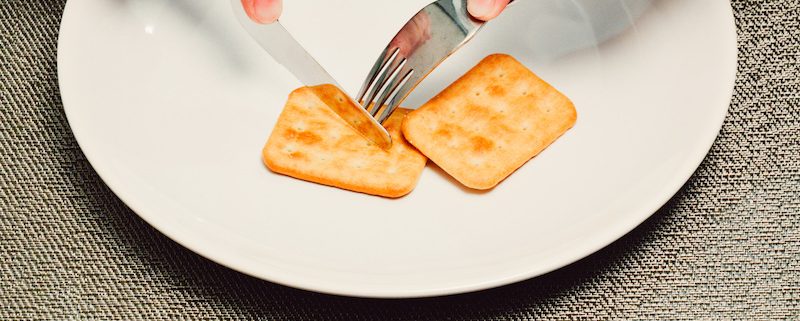Fixing Small Plates: Common Problems of Small Plate Restaurant Service
Where do you stand on the trend of small plate dining? Have you ever grumbled at the wee bit of food that you’re expected to share with a group of four? Or maybe you’ve marveled at the range of dishes you were able to try. The small plate trend has been building for a few years, and now more new restaurants are pledging themselves to the small plate zeitgeist. There is a division of opinion on small plate dining that, like properly placed forks and knives, occupy space on either side of the plate. But despite conflicting views, there is one problem that both sides must agree on: some restaurants are flat out doing small plates wrong. See for yourself, here are the most common problems with small plate dining, and tips to fix them.
Food Fight
Critics of small plate dining lament the loss of entrees and individual courses as an attack on diners’ independence and consent. Proponents note that shared plates offer more opportunity for diners by giving them a panoramic experience of a kitchen’s food, which creates informal tasting menus at reasonable prices. The wonderful thing about it all is that traditional entree-focused dining and small plates both have a place in modern dining. There is no need to fear that entrees will go the way of the Apple™ headphone jack. As long as there are critics of small plates, there will be a market for individual courses. But while many of the arguments against against shared plates are written as hyperbolic and partially beef tongue-in-cheek, there are valid criticisms of how some restaurants execute the small plate concept.
Common Issues in Small Plate Dining

Photo by Brigitte Tohm
We’ll stay away from the philosophical arguments against small plates, and stick with problems that occur as a result of poor service and execution. The tricky part of small plate dining is that it requires a balletic style of service and tight execution that too many restaurants fall short of. This creates a chaotic, awkward experience that can leave diners feeling unsatisfied at best, and hoodwinked at worst. Here are some valid issues with small plate eateries that are claiming the tapas-style but not providing that experience.
Items that can’t be easily shared
Restaurants must stop selling dishes as sharable if the construction of the plate isn’t shareable. This is especially relevant to meat based dishes like steak or chicken, that are sometimes served like a traditional entree, but then expected to be cut, portioned, and served to guests at the table by other guests at the table.
The Fix: Make sure all of your dishes can actually be shared. If you serve a steak, it must be sliced prior to being served to guests. Meat should be taken off the bone. Why are you serving a double patty burger at a small plate venue? Be committed to your service style, and build dishes accordingly.
Not Communicating Dish Size
Some restaurants fail to convey the size of a dish to their guests. This can lead to over- or under-ordering and will frustrate guests. Just because a recommendation of 2-3 plates per guest is given, doesn’t mean that rings true for every combination of dishes.
The Fix: A well designed and clear menu is a great place to start. After that, it is up to your server. When it comes to customer service, proactive service is generally valued above reactive service. It means your getting ahead of issues before they arrive. Server spiels at small plate spots should give you a plate-per-person recommendation for how many dishes will give the satisfaction of a full meal. That is proactive customer service in action. But servers should be better at reactive customer service, and adjust their spiel to meet the needs of the customer. If a group of 5 or more people are honing in on some of your menus smaller dishes, then let them note that they might want to double those orders. If done properly, this won’t come across as a blatant upsell. Conversely, if a two top is ordering a buffet of your largest dishes, let them know that a lot of food is coming.
Poor Coursing and Pacing

Photo by Jan Vašek
Most small plates restaurants send out food as soon as it is ready in the kitchen. The logic behind this is sound. Restaurants don’t want food to sit under a heat lamp, or have a salad soak in its own dressing, because as certain foods sit idle the integrity of the dish can diminish. It’s sort of a food quality half-life. Sending food out quickly is done to benefit the guest experience. But if a table is overloaded with plates too quickly, or savory and hearty dishes are sent out before lighter, more delicate dishes, that can hurt the guest experience in another way. Visiting a restaurant is more than just a chance to taste food. There is also a valued social experience shared between guests and their companions. It’s necessary that a chef’s desire for guests to receive the best possible version of a dish doesn’t ignore the guests’ desire to enjoy themselves.
It may be a tall order, but is it not possible for food to be sent out for peak enjoyment while maintaining a paced coursing.
The Fix: Servers and the expo line must have great communication in a shared plate restaurant. Making sure dishes leave the kitchen in a logical order is key for diner happiness. Servers must be situational aware. Some tables may prefer to get food as quickly as the kitchen can make it. Other diners may want a more paced, relaxed meal. Restaurants should be able to accommodate diner preferences. If a restaurant is inflexible to the point where it can’t be concerned with guest preference, then it can’t claim itself as part of the hospitality industry.
Lax Table Maintenance
Shared plate dining takes up more space on a table than traditional dining. It’s key that servers and bussers keep tables clean and avoid overcrowding. If there isn’t enough room for a guest to rest their elbows on the table between bites, then there are too many things on the table.
The Fix: Bussers, runners, and servers must all work together to clear tables and make sure that tables are never overcrowded. Good communication is key here, too. When dirty plates or utensils are cleared while food is still coming, then servers must make sure that they are replacing them before the next dish arrives. Management should help here. Both in terms of actually clearing tables but more so in making sure servers are attentive and cognizant of their tables state.
Restaurant is Too Big
Many of the issues above really show themselves at large, 100+ seat restaurants. Sometimes, the style of service needed to execute small plates is too difficult to execute at large restaurants. Small plate dining puts a lot of pressure on the kitchen, especially at specific stations on the line. Big restaurants running small plate menus often send out dishes in haphazard ways, as it can be difficult to coordinate service across the line if one station is getting hit with a lot of orders, while another has a more manageable ticket rail. Smaller restaurants, with smaller kitchens, are the best fit for small plates.
The Fix: Not running small plate service in too large a restaurant. Short of that? Reorganize your kitchen and make sure it can run as efficiently as possible. When building your menu, consider which items will be made at each station on the line. Don’t overload any one station. If necessary, change how you prep your items to ensure the most efficient service.
Key Points
- Small plates require a specific type of service and kitchen organization that differs from traditional coursed meal service
- Make sure your menu actual reflects small plate serving sizes
- Communication is really important for this style of service. Communication between staff and guests, and communication between the front and back-of-house
- Don’t sacrifice the overall guest experience because of inflexible service
- 5 Fall Cocktails to Capture the Flavors of Autumn - September 26, 2018
- How Restaurants Can Ignore Sales and Increase Profits - May 9, 2018
- 2018 Spring Wine Trends - April 18, 2018








